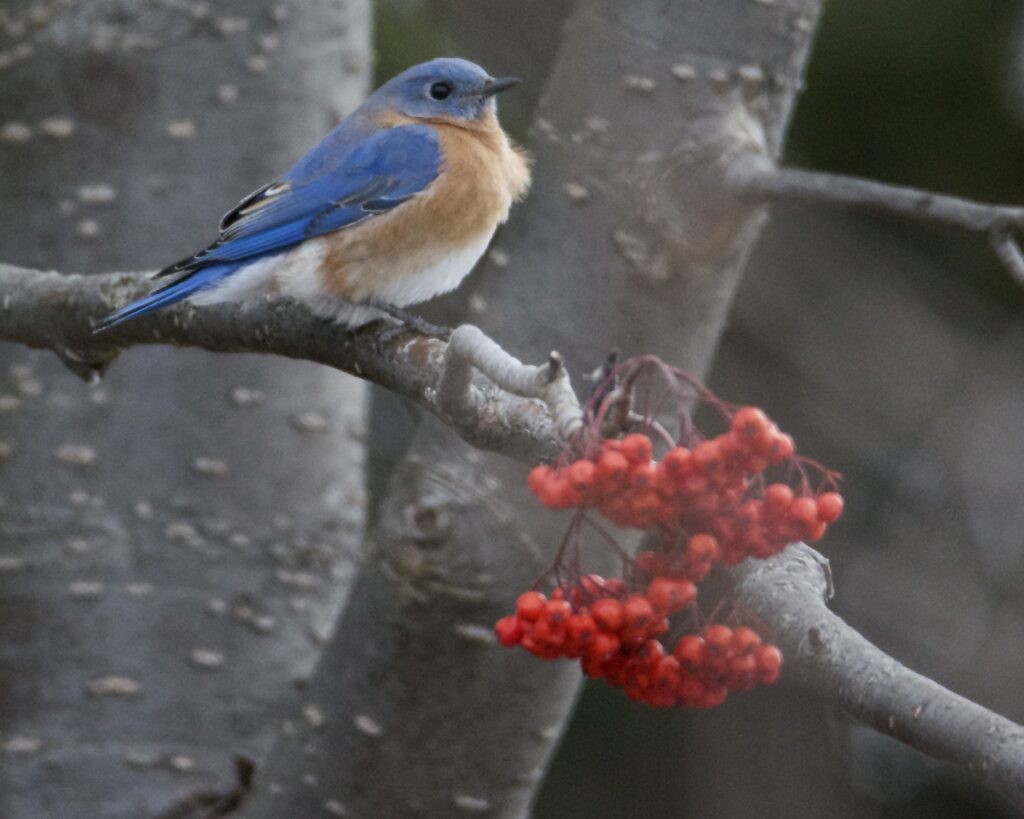Birds are often the first wildlife we see and hear in our daily lives, greeting us from all directions as soon as we step into the outdoors. Descended from dinosaurs, our modern birds are found on every continent throughout the world—but there’s a problem.
According to science journals, there are three billion fewer birds now than there were 50 years ago. That’s a population decrease of 30%, meaning more than one in four adult birds are gone. The annual Audubon Christmas Bird Count (CBC) is an important source of data in these studies.
“Censusing birds has become a worldwide professional and citizen endeavor, and a great science data set, useful in looking at trends in populations, habitat changes, and climate changes,” explains Jeremy Ridlbauer, the CBC compiler for the Grand Marais area.
You may be familiar with Ridlbauer through his well-established Grand Marais electronics business, Sundew Technical Services, LLC, though he also has a long history in nature studies. A degree in botany led him into the field for years working with plants, and an interest in birds developed with time. “I am really interested in participating in larger projects that can show long term trends data,” he says.
The CBC is the nation’s longest running, volunteer-based citizen science bird project. It began in 1900, proposed by ornithologist and early Audubon officer Frank M. Chapman as a replacement to the annual ‘Christmas Side Hunt.’

In the late 1800s on December 25, participants would choose a field to hunt, and the goal was to bring back as many feathered and furred creatures as possible by the end of the day. It wasn’t long before people realized it was an unsustainable practice.
“Conservation was budding, and folks were concerned about declining bird populations even then,” Ridlbauer says. “Now we have big days, big years, backyard bird counts, breeding bird surveys in the summers, and Christmas count in the winters.”
The first bird count in 1900 included 25 locations across North America, with 27 people counting around 18,500 individual birds of almost 90 species. The project has since expanded to include 20 countries in the Western hemisphere, and last year over 2,200 species were spotted.
The CBC is conducted annually between December 14 and January 5. Count compilers like Ridlbauer oversee a 15-mile diameter circle and choose a single day to do the survey, organizing and sending volunteers across the designated area to count every bird they see and/or hear. This year’s count in Grand Marais takes place on December 14.
“We have groups or individuals cover certain areas of the count circle, individual feeder watchers, and we have two walking crews that survey all of Grand Marais proper,” Ridlbauer explains. “We pretty much spend the eight hours of daylight birding, and then some of us try to listen for owls, etc. at night. We typically have 25-35 folks in 5-10 parties looking for birds in a typical year, and we find between 1,000-4,000 individual birds and 30-50 species, depending on effort.”

Counting birds sounds easy, but the survey can be challenging. Weather is unpredictable, and early winter storms can cause birds to be less active, as well as more difficult to see. Fast flying birds like hawks can be a challenge to identify, so birders have to consider their size, body shape, and habitat while surveying.
“Warblers are tougher just due to their size and speed of moving through the trees,” Ridlbauer says, recalling how a pine warbler was spotted during the CBC a few years ago. “You have to spend more time looking and gathering field marks to properly identify what you are seeing, and call in others that are birding to confirm, and make sure that birds folks want to see are seen. We all want to see the unusual ones.”
According to Ridlbauer, birds often recorded in the Grand Marais survey circle during the CBC include woodpeckers, crows and ravens, common goldeneyes, finches, crossbills, grosbeaks, waxwings, robins, and chickadees. Rarer finds are towhees, wrens, warblers, eiders, scoters, smaller hawks, some sparrows, and owls.
It’s impossible to count every bird within the survey circle, but volunteers do their best to be as accurate as they can. “We always joke when we’re doing the [CBC] that we’re always under counting,” Ridlbauer recalls, “so unless we see consistently the same exact birds at a feeder or a defined spot, we count them as individuals. Especially chickadees!”
At the end of the day, surveyors report their findings to Ridlbauer and he compiles the data. “Since this is citizen science driven, we coordinators will ask questions of observers to make sure they identified correctly what they saw and get descriptions of rarer birds that might need to be documented,” he explains. The data is sent to state coordinators for a final look over, and then it’s submitted to Audubon to be tallied into the dataset.

“That dataset is used for investigation and science research on population trends, health status, habitat changes, and protection work,” Ridlbauer states. Bird counts like this one help scientists identify trends that can lead to strategic bird conservation efforts.
The CBC is an annual social experience that builds community and an interest in nature science. If you live near Grand Marais and would like to be a bird count volunteer, there is room for more. Novices and experienced birders alike are encouraged to join.
“Depending on your skill level and time available, we’ll get you out with our GM crews or running a further out route, or get you set up for feeder watch,” Ridlbauer says. “Please text or call 218-370-0733 or email sundew@boreal.org.”
If you live elsewhere, check online to see if there is a CBC circle organized by a compiler near you. Otherwise, you can wait until February when everyone worldwide is invited to participate in the annual Great Backyard Bird Count (GBBC).




